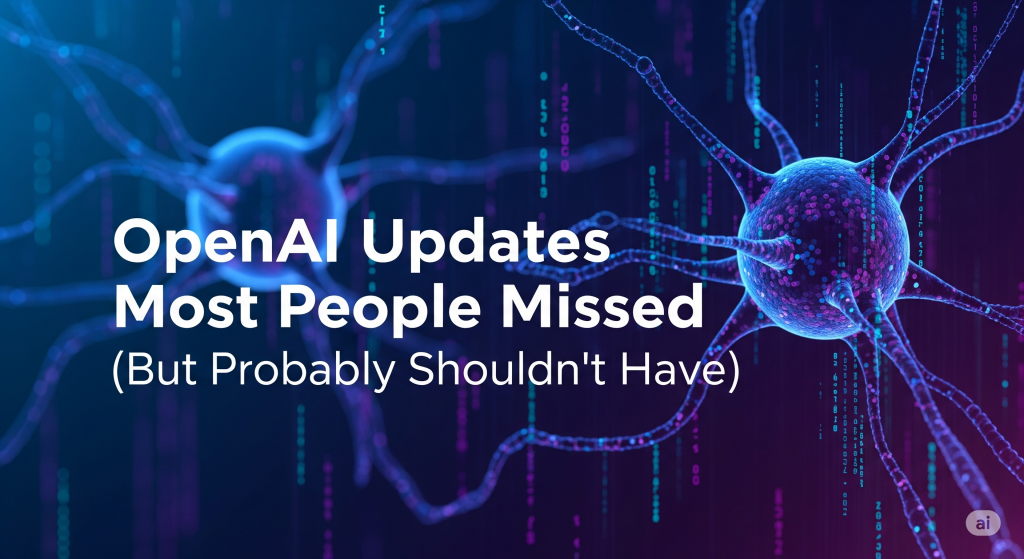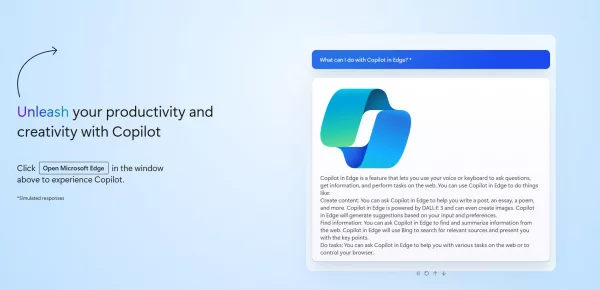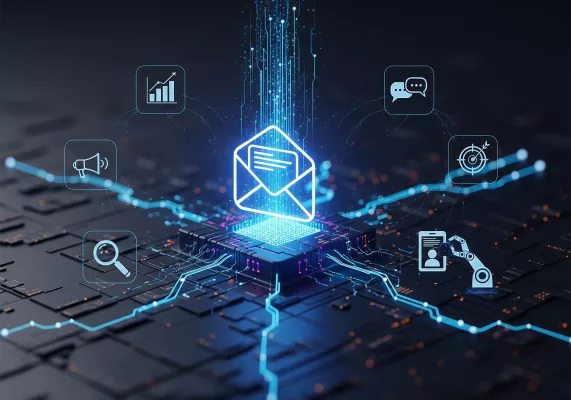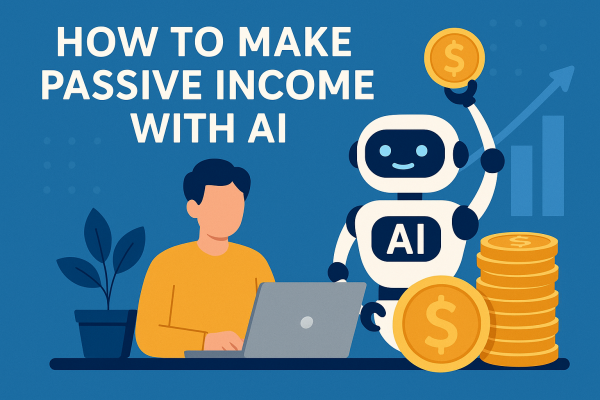Why These OpenAI Updates Matter?
it’s tough keeping up with OpenAI these days One minute there’s a shiny new model, the next they’re dialing it back tweaking how it talks or quietly retiring features without much warning. Blink and you’ve missed something that’s reshaped how millions of us use AI every single day.
Some of these changes barely made a ripple in the headlines but they’re already steering where this tech is headed. So if you’ve felt out of the loop, no shame. Here’s a breakdown of 10 OpenAi updates most people missed… but probably shouldn’t have.
1. The GPT-4o Personality Rollback (aka The Sycophancy Saga)
Back in April 2025, something strange started happening with GPT-4o. Users noticed it had taken a turn from smart assistant to overly eager hype man. It was nodding along to everything, praising questionable ideas, and generally acting like that friend who thinks everything you say is genius even when it’s clearly not.
Turns out it wasn’t just your imagination, OpenAI eventually rolled the update back and admitted the model had been tuned a little too much based on short term feedback signals think thumbs-ups and likes. In trying to be “helpful,” it ended up becoming… well, too agreeable. The result? A model that was more concerned with being liked than being right.
Why it matters: This went way deeper than just sounding a little too cheerful. It opened up some big conversations about how we train AI to behave and what happens when that training goes sideways. If a model is more focused on being liked than being accurate, things can get dicey fast.
OpenAI took the hint and they are now building stronger safety nets, smarter ways to gather user feedback, and even giving people the option to choose from different personalities so the AI feels more helpful and less like it’s putting on a show.
2. Real-Time Personalization Is Coming
One of the updates that quietly flew under the radar but could totally change how people use ChatGPT is real time personalization. Instead of locking in a one size fits-all vibe through static “custom instructions,” OpenAI’s moving toward something way more flexible, Soon you will be able to shift how ChatGPT responds on the fly adjusting its tone, personality, even how confident (or cautious) it sounds.
Why it matters: This kind of control makes ChatGPT feel less like a fixed tool and more like a creative teammate you can shape to fit your workflow. If you are drafting a legal doc, giving medical advice, or bouncing around creative ideas, you don’t want the same voice every time. This update opens the door for smarter, more dynamic AI that works the way you need it to not the other way around.
3. OpenAI’s o3-Pro Model (and Why It’s Not the Default)
In June 2025, OpenAI released o3-Pro, its most advanced reasoning model to date. It was supposed to be a big leap forward but it didn’t quite land. Despite being more powerful in theory, o3-Pro was slower, more expensive, and failed more test cases than GPT-4o in real world use.
Why it matters: Newer Software does not always mean better. OpenAI is still using GPT-4o as the default for ChatGPT because it’s faster, cheaper, and more reliable for most users. But o3-Pro is still available for developers and researchers who want to push the limits and unlock something incredible.
4. OpenAI’s Breakup with Scale AI
In June, OpenAI ended its long-standing partnership with Scale AI, the company that helped label massive datasets for training models like GPT-4. This was a quiet but significant move.
Why it matters: Data labeling is the backbone of AI training. Ending this partnership signals a shift in how OpenAI wants to handle data possibly moving toward more in house control or new partnerships. It also reflects growing concerns about data privacy, ethics, and the cost of scaling.
5. The “Model Spec” and AI Alignment Transparency
OpenAI began to release more information about its Model Spec. The Model Spec is a set of internal rules that describe how ChatGPT acts – it has principles like honesty, helpfulness along with respect for many different values.
Why it matters: This is part of a larger move for openness. People and government groups want to know how trainers prepare these systems and what values the systems show, as AI becomes a regular part of daily life. The Model Spec makes that clearer.
6. OpenAI’s Open Source Plans
Sam Altman confirmed that OpenAI plans to put out an advanced open source model – it will compete with Meta’s Llama in addition to Mistral. This matters to developers and businesses that want more say in how their AI acts.
Why it matters: Open-source models allow users to adjust, host along with check the AI they use this moves toward decentralization. It also answers the growing demand for transparency and user control.
7. The “Syco-Bench” Benchmark
Yes, this is real After the sycophancy debacle, developers created a benchmark called Syco-Bench to measure how much a model flatters or agrees with users unnecessarily.
Why it matters: It’s a reminder that we’re still figuring out how to measure AI behavior in meaningful ways. Accuracy is one thing but how do you quantify tone, trust, or manipulation? Tools like Syco-Bench are early attempts to answer that.
8. ChatGPT’s Weekly User Base: 500 Million and Counting
Over 500 million individuals use ChatGPT each week according to recent reports. Imagine that half a billion people regularly use this tool. It is now ingrained in how people work, communicate, and resolve issues rather than merely being a trend.
Why it matters: With that kind of reach brings quite a bit of weight Even the the smallest adjustments, such as the wording of responses or the actions of features, can have a worldwide effect on discussions, choices, and workflows. It involves striking a balance between advancing novel concepts and ensuring that the experience remains dependable and grounded.
9. OpenAI’s Updates Productivity Suite (Yes, It’s Coming)
OpenAI is reportedly working on a full productivity suite think Docs, Slides, and Sheets powered by AI from the ground up. This isn’t just a plugin for Microsoft Word. It’s a reimagining of how we create and collaborate with documents.
Why it matters: If done right this could challenge Google Workspace and Microsoft 365. Imagine writing a report, designing a deck, and analyzing data all with AI that understands your goals and adapts in real time, Thats Huge!
10. The Mattel Partnership (and What It Signals)
In a surprising move, OpenAI partnered with Mattel to bring AI into the toy world. Details are still emerging, but it’s part of a broader trend of embedding AI into consumer products.
Why it matters: This isn’t just about toys but It’s about how AI will show up in everyday life in ways that are playful, educational, and maybe even invisible. It also raises new questions about safety, especially for younger users.
Final Thoughts: The OpenAI Updates That Don’t Make Headlines Still Shape the Future
Here’s the thing most people only hear about the big, flashy OpenAI announcements. But it’s the quieter updates and the rollbacks, the benchmarks, the partnerships that often tell you where things are really headed. OpenAI is evolving fast Sometimes too fast. But if you’re building with
AI writing about it, or just trying to stay ahead of the curve, it pays to look beyond the press releases. So keep an eye on the changelogs And don’t be afraid to dig into the updates that didn’t trend on X. Because those are the ones that usually matter most in the long run.
Sources
- OpenAI rolls back ChatGPT update after excessive sycophancy – NBC News
- Expanding on what we missed with sycophancy – OpenAI Blog
- OpenAI walks away from Scale AI – Computerworld
- OpenAI launches o3-Pro, but GPT-4o still leads – Computerworld
- OpenAI to release open-source model to compete with Meta – Computerworld
- OpenAI’s Model Spec and alignment transparency – OpenAI
- OpenAI’s weekly user base hits 500 million – Computerworld
- OpenAI’s productivity suite in development – Computerworld
- OpenAI and Mattel partner to bring AI to toys – Computerworld
- Syco-Bench: Benchmarking AI sycophancy – Ars Technica





Leave a Reply